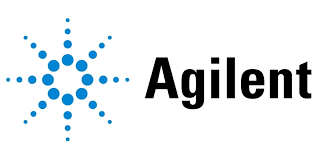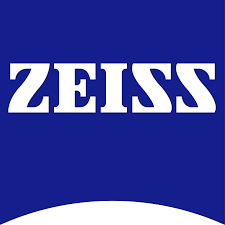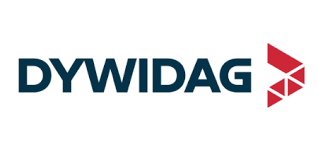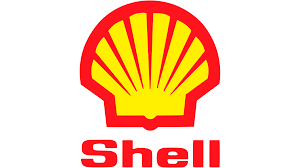Cell Surface Markers Market Report
Published Date: 15 December 2025 | Report Code: cell-surface-markers
Cell Surface Markers Market Size, Share, Industry Trends and Forecast to 2033
This report provides an extensive analysis of the Cell Surface Markers market from 2023 to 2033, covering market trends, insights into industry dynamics, regional segmentation, and forecasts. It aims to equip stakeholders with critical data essential for strategic decision-making.
| Metric | Value |
|---|---|
| Study Period | 2023 - 2033 |
| 2023 Market Size | $5.60 Billion |
| CAGR (2023-2033) | 6.3% |
| 2033 Market Size | $10.48 Billion |
| Top Companies | Thermo Fisher Scientific Inc., BD Biosciences, Merck KGaA, Beckman Coulter, Inc., R&D Systems |
| Last Modified Date | 15 December 2025 |
Cell Surface Markers Market Report (2023 - 2033)
Cell Surface Markers Market Overview
Customize Cell Surface Markers Market Report market research report
- ✔ Get in-depth analysis of Cell Surface Markers market size, growth, and forecasts.
- ✔ Understand Cell Surface Markers's regional dynamics and industry-specific trends.
- ✔ Identify potential applications, end-user demand, and growth segments in Cell Surface Markers
What is the Market Size & CAGR of Cell Surface Markers market in 2023?
Cell Surface Markers Industry Analysis
Cell Surface Markers Market Segmentation and Scope
Tell us your focus area and get a customized research report.
Cell Surface Markers Market Analysis Report by Region
Europe Cell Surface Markers Market Report:
Europe's market is forecasted to grow from USD 1.96 billion in 2023 to USD 3.67 billion by 2033. Factors such as regulatory advancements, growing biotechnology sectors, and a high emphasis on research and clinical trials contribute to this growth.Asia Pacific Cell Surface Markers Market Report:
In the Asia-Pacific region, the Cell Surface Markers market is expected to grow from USD 0.90 billion in 2023 to USD 1.69 billion by 2033, highlighting significant developments in biotechnology and increased funding for medical research advancing cancer and autoimmune diagnostics.North America Cell Surface Markers Market Report:
In North America, the market will expand from USD 1.91 billion in 2023 to USD 3.58 billion in 2033. The region's dominance is supported by robust technological advancements, strong research activities, and a high prevalence of chronic diseases necessitating effective diagnostic tools.South America Cell Surface Markers Market Report:
The South American market is projected to grow from USD 0.38 billion in 2023 to USD 0.70 billion by 2033. Growth dynamics are driven primarily by rising healthcare investments and efforts to enhance diagnostic capabilities in developing nations.Middle East & Africa Cell Surface Markers Market Report:
In the Middle East and Africa, the market size will rise from USD 0.45 billion in 2023 to USD 0.84 billion by 2033, driven by increased healthcare expenditure, emerging research infrastructures, and a greater focus on combating endemic diseases.Tell us your focus area and get a customized research report.
Cell Surface Markers Market Analysis By Type
Global Cell Surface Markers Market, By Type Market Analysis (2023 - 2033)
The Cell Surface Markers market by type showcases significant size variations. Glycoproteins dominate the market, projected to reach USD 6.54 billion by 2033 from USD 3.5 billion in 2023, maintaining a share of 62.44%. Glycolipids are expected to capture USD 2.86 billion by 2033, reflecting a share of 27.34%. Proteins, although smaller, are seeing growth from USD 0.57 billion to USD 1.07 billion. This demonstrates their essential role across various functional applications.
Cell Surface Markers Market Analysis By Function
Global Cell Surface Markers Market, By Function Market Analysis (2023 - 2033)
Marking significant uses, cell adhesion, signal transduction, and immune recognition are central functions in the Cell Surface Markers market. Cell adhesion markers are valued at USD 3.5 billion, expanding to USD 6.54 billion in 2033. Signal transduction and immune recognition hold smaller but vital market shares, expected to reach USD 1.07 billion and USD 0.6 billion, respectively, reflecting increasing application in diagnostic tools.
Cell Surface Markers Market Analysis By Application
Global Cell Surface Markers Market, By Application Market Analysis (2023 - 2033)
Application segmentation shows cancer diagnostics lead the way with a market size of USD 2.64 billion in 2023, expected to grow to USD 4.95 billion by 2033, signifying a 47.23% market share. Autoimmune diseases and infectious diseases also play important roles, projected to expand steadily in line with increasing diagnostics demand across healthcare settings.
Cell Surface Markers Market Analysis By End User
Global Cell Surface Markers Market, By End-User Market Analysis (2023 - 2033)
End-user segmentation highlights the importance of research institutes, pharmaceuticals, and diagnostic laboratories within the market. Research institutes dominate with a size of USD 3.50 billion growing to USD 6.54 billion by 2033, while pharmaceuticals and diagnostic set a significant footprint anticipated to reach USD 2.86 billion and USD 1.07 billion, respectively, indicated by strong investment in R&D activities.
Cell Surface Markers Market Trends and Future Forecast
Tell us your focus area and get a customized research report.
Global Market Leaders and Top Companies in Cell Surface Markers Industry
Thermo Fisher Scientific Inc.:
A key player producing a range of reagents and antibodies aimed at enhancing diagnostics and therapeutic applications.BD Biosciences:
Noted for their contributions to flow cytometry and cell analysis, BD is instrumental in advancing cellular research through innovative solutions.Merck KGaA:
Merck delivers cutting-edge biopharmaceuticals and innovative diagnostic tools focusing on applications for cell surface markers in various disease states.Beckman Coulter, Inc.:
Specialized in laboratory diagnostics, Beckman Coulter provides advanced technology for effective cell analysis, enhancing the accuracy of diagnostics.R&D Systems:
Recognized for their high-quality antibodies, proteins, and reagents that are crucial for cellular and molecular biology research.We're grateful to work with incredible clients.









FAQs
What is the market size of cell Surface Markers?
The global Cell Surface Markers market is projected to grow from $5.6 billion in 2023 to significant values by 2033, with a compound annual growth rate (CAGR) of 6.3%. This growth is attributed to increasing applications in diagnostics and research.
What are the key market players or companies in this cell Surface Markers industry?
Key players in the Cell Surface Markers market include major biotechnology firms, pharmaceutical companies, and research institutions that specialize in immunology, oncology, and cell biology. Their innovations drive advancements in diagnostic tools and therapies.
What are the primary factors driving the growth in the cell Surface Markers industry?
The growth in the Cell Surface Markers industry is driven by increasing prevalence of diseases, advancements in research methodologies, rising funding for biomedical research, and a growing market for personalized medicine and diagnostics.
Which region is the fastest Growing in the cell Surface Markers?
The fastest-growing region in the Cell Surface Markers market is expected to be Europe. The market in Europe is projected to grow from $1.96 billion in 2023 to $3.67 billion by 2033, demonstrating significant growth in research and healthcare investments.
Does ConsaInsights provide customized market report data for the cell Surface Markers industry?
Yes, ConsaInsights offers customized market reports for the Cell Surface Markers industry. This includes tailored analysis based on specific research needs, market segments, and geographic focus, ensuring relevant insights for stakeholders.
What deliverables can I expect from this cell Surface Markers market research project?
Deliverables from the Cell Surface Markers market research project typically include comprehensive market analysis reports, regional data, competitive landscape assessments, trend analyses, and forecasts segmented by type and application.
What are the market trends of cell Surface Markers?
Current trends in the Cell Surface Markers market include increased focus on precision medicine, advancements in diagnostic tools, integration of AI in research, and the rising importance of biomarkers in treatment decisions.
